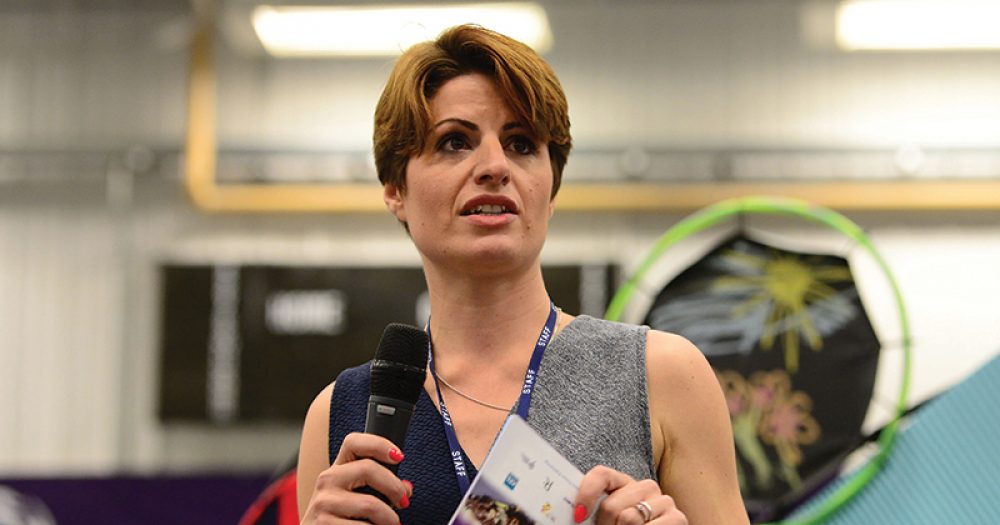Traditionalist “chalk and talk” pedagogy is pushing oracy skills out of the curriculum to the detriment of poorer pupils, according to an MP who was once a primary teacher.
Emma Hardy (pictured), Labour MP for Hull West and Hessle, said that schools favouring Victorian-style teaching methods in which pupils are “seen and not heard” is harming their ability to debate and criticise.
She is now using her platform to back a campaign to train teachers in oracy – the art of teaching children to speak well.
Voice 21, a charity dedicated to promoting oracy, has recruited 27 teachers from across the UK onto its oracy leaders programme. The year-long programme involves a two-day residential stay at Cambridge University at a cost of £1,250. Teachers run their own projects in school and feedback at the end of the year.
What matters hugely for pupils’ life chances is oral communication
The participants also visit School 21 in north-east London, a free school run by Peter Hyman, a former policy advisor to Tony Blair, who has implemented an oracy-based curriculum.
Hardy, who supports the programme, told Schools Week that she is now trying to raise the status of oracy at Westminster.
The education select committee has shown an interest, and Hardy said she would like it to launch an inquiry into “the effects of strict behaviour policies and traditionalist teaching” on pupils’ ability to flourish in independent learning environments such as university.
“What matters hugely for pupils’ life chances is oral communication,” she said. “But instead there’s been this move towards a chalk-and-talk model of teaching that’s quite traditional.”
Ministers have previously acknowledged the importance of speech, but feared that raising its profile could “encourage idle chatter in class”, according to a paper by Cambridge education professor Robin Alexander, who first spoke to the Department for Education about including spoken language in the national curriculum in 2012.
At the same time, other ministers have praised schools such as Michaela Community School in north-west London, which require silence in corridors and have teacher-centric classrooms.
But the headteacher of a school which uses similar methods to Michaela, Peter Lee at Q3 Academy Langley near Birmingham, said staff and pupils eat together at a “family lunch” which “implicitly models oracy” through a daily discussion of a political or ethical topic.
Meanwhile, the SLANT instruction it uses, in which pupils fold their arms and track the teacher with their eyes in silence, is used to “ensure pupils are actively listening”, another element of oracy.
Martin Robinson, an education consultant, believes the classical teaching model should actually have rhetoric and debate “at its core”. Sometimes the model is “misunderstood” and becomes a “one-way” communication from the teacher to the pupil, often as a result of exam pressure.
But the best use of the traditional model should treat pupils as “active, engaged humans” who can express themselves in considered academic terms, he said. Allowing pupils to speak in an unstructured way may give them too much say over the content of lessons, however, as seen in some “progressive” styles of teaching.
Voice 21 is also launching an oracy development programme in each region, with 30 teachers on each, starting this year with the north-west, north-east, the Midlands and London.
The results of a pilot with the Education Endowment Foundation, looking into the effects of Voice 21’s oracy training on pupil outcomes at 12 schools, will be published soon.
Case study: Rebecca Want
Rebecca Want, an assistant headteacher at Huntingdon primary academy in Nottingham, is on the programme this year.
Pupil outcomes in reading and writing have improved using certain techniques, including the “onion formation”: an inner circle and outer circle of pupils. Each pupil has learned about a topic, and explains it to the next as the circle rotates, helping consolidate their own knowledge.
In maths lessons, she has placed greater emphasis on pupils explaining their reasoning out loud as part of maths mastery. “It’s about modelling to the pupils that their voice is important”, though the techniques also “make for fantastic teaching”.
Case study: Sarah Hancock
Sarah Hancock, literacy lead at City Learning academy trust in Stoke-on-Trent, joined the programme after worrying that some pupils were giving “one-word answers”.
Hancock has used a technique known as a “Harkness circle”. After learning about a book, for instance, pupils sit in a circle to discuss it. This is tracked with a visual representation: pupils’ names are written around a circle, and a line is drawn between them as each makes a contribution.
“They realise when they aren’t talking,” she said, and quieter pupils now speak up more. “If they can’t articulate themselves properly, how on earth can they write well?”



Good luck getting this past Nick Gibb. He has no interest whatsoever in oracy, unless you can screen it easily and construct a league table based on performance in the test. Presumably it would involve pupils’ ability to speak in tongues with measurable pronunciation and intonation. Sadly, Stanley Unwin isn’t around to moderate teacher assessments.